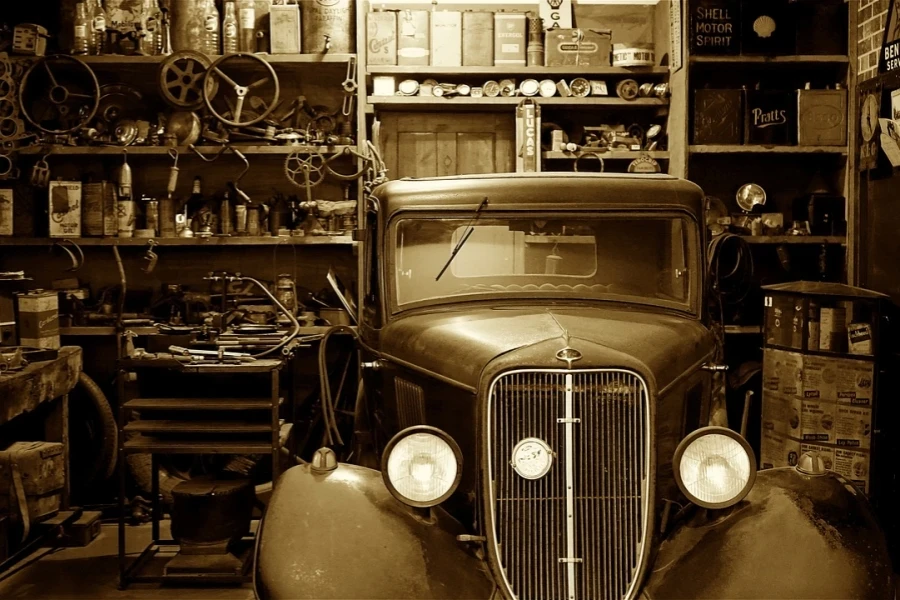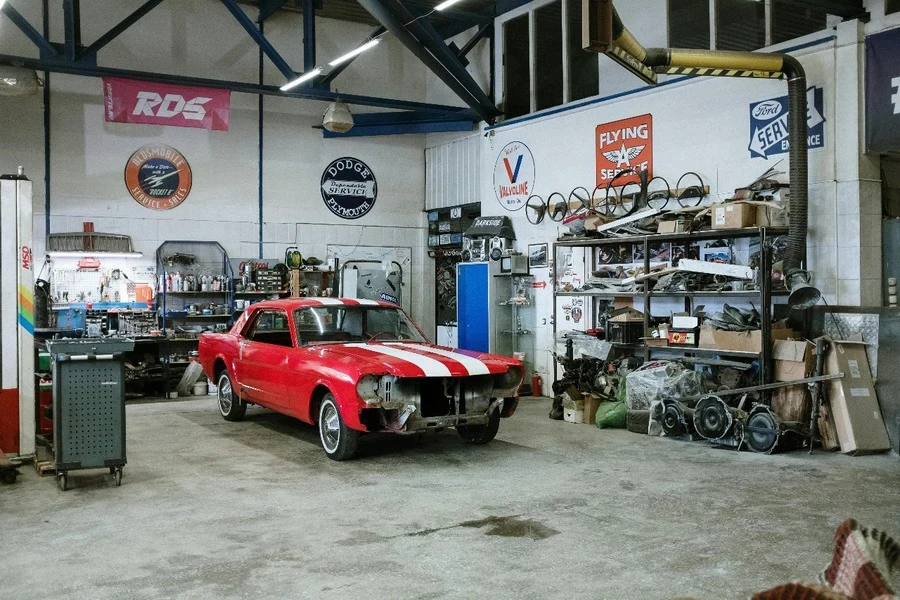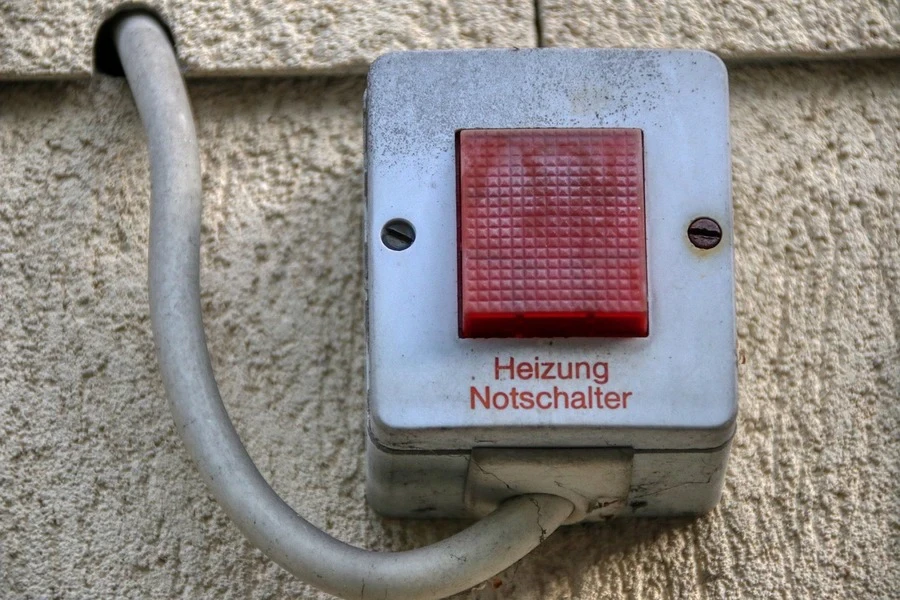Wenn die Temperaturen sinken, kann es eine Herausforderung sein, die Garagen warm und komfortabel zu halten. Dies ist noch gravierender, wenn jemand seine Garagen als Rückzugsort für Projekte, Hobbys oder als zusätzlichen Lagerraum nutzt. Hier kommt eine Propangas-Garagenheizung ins Spiel. Propangas-Garagenheizungen bieten effiziente und leistungsstarke Heizung und sind eine zuverlässige Lösung für alle, die ihre Garage auch in den kalten Monaten nutzen möchten.
Mit zunehmendem Interesse an Heimwerker- und Heimwerkerprojekten werden diese Heizgeräte bei Hausbesitzern immer beliebter. Suchtrends unterstreichen die wachsende Nachfrage nach Propangas-Garagenheizgeräten.
Gleichzeitig bestätigen Verkaufszahlen ihre steigende Beliebtheit bei Eigenheimbesitzern, die nach effizienten Heizlösungen für ihre Arbeitsräume suchen. Angesichts dieses steigenden Interesses haben wir einen umfassenden Leitfaden zusammengestellt, der Unternehmen dabei helfen soll, sich mit den gefragtesten Propangas-Garagenheizungen auf dem Markt im Jahr 2025 einzudecken.
Inhaltsverzeichnis
Globale Marktgröße für Propangas-Garagenheizungen
3 beliebte Arten von Propanheizungen
Wie wählen Kunden Propanheizungen für Garagen aus?
Unter dem Strich
Globale Marktgröße für Propangas-Garagenheizungen

Der Markt für Propanheizungen wurde im Jahr 1.15 auf 2023 Milliarden USD geschätzt und soll eine solide durchschnittliche jährliche Wachstumsrate (CAGR) von ca. 4.3 % von 2024 bis 2032, getrieben durch die steigende Nachfrage nach umweltfreundlichen Produkten.
Sucht nach Propangas-Garagenheizungen Höhepunkt im Winter. Im Dezember 2023 gab es 22,200 Suchanfragen. Bis Februar 2024 sank diese Zahl auf 18,100. In den wärmeren Monaten sank das Interesse weiter. Im November 2024 stieg es wieder an. Das Marketing sollte sich auf diese Spitzensaisons konzentrieren.
Umsatztreibende Faktoren
Die Nachfrage nach Propangas-Garagenheizungen wächst aufgrund besserer Steuerung durch intelligente Technologie, verbesserter Energieeffizienz und der Vorliebe für Propangas als sauberer Brennstoff. Auch die Sicherheit steht im Mittelpunkt. Hersteller fügen Funktionen wie Flammenausfallsensoren, Kippschutz und automatische Abschaltsysteme hinzu, um die Heizungen sicherer und zuverlässiger zu machen.
Innovationen bei der Verbrennung und Wärmeübertragung haben die thermische Effizienz dieser Heizgeräte verbessert. Dies senkt die Brennstoffkosten und unterstützt die Bemühungen der Regierung, den CO2-Fußabdruck zu reduzieren.
3 beliebte Arten von Propanheizungen

Eine Propangas-Garagenheizung ist eine kostengünstige Option zum Heizen mittelgroßer bis großer Garagen, insbesondere solcher mit hohen Decken oder ohne Erdgasleitung. Sie ist perfekt für kalte Klimazonen geeignet und verwendet einen der saubersten Brennstoffe, wodurch sie sich gut für Garagenräume eignet.
Hier sind drei Arten von Propangas-Garagenheizungen, die den Umsatz des Einzelhandels steigern könnten:
1. Garagenheizungen mit Warmluft
Warmluftheizungen funktionieren ähnlich wie ein Ofen, zirkulieren warme Luft gleichmäßig in der Garage und sind daher das ganze Jahr über komfortabel zu nutzen. Moderne Modelle sind besonders leise und verfügen über Funktionen wie einstellbare Thermostate, integrierte Sicherheitsmechanismen und Fernbedienungen.
Um die Leistung zu verbessern, sollten Thermostate nicht im direkten Luftstrom platziert werden, normalerweise unter der Heizung. Ein Nachteil sind jedoch die höheren Betriebskosten. Außerdem entweicht die warme Luft beim Öffnen des Garagentors schnell, sodass die Heizung mehr arbeiten muss, um die Temperatur wiederherzustellen.
Im Gegensatz zu anderen Modellen sind Warmluftgeräte weniger von ihrem Standort abhängig und bieten mehr Flexibilität bei der Installation.
2. Konvektionsgasheizungen
Konvektionsgasheizungen sind für die Beheizung von Garagen durch natürliche Konvektion konzipiert.
Diese Heizgeräte verwenden Propan als Brennstoff zur Wärmeerzeugung. Die Wärme wird dann durch die natürliche Luftbewegung im Raum verteilt. Wenn sich die Luft in der Nähe des Heizgeräts erwärmt, wird sie leichter und steigt auf. Kühlere Luft aus der Umgebung strömt dann ein und ersetzt sie. Dieser Prozess erzeugt einen natürlichen Luftstromkreislauf, der die Wärme gleichmäßig verteilt.
Einige herausragende Merkmale dieses Modells sind:
- Sie verfügen über ein einfaches Design ohne Lüfter oder Gebläse und verlassen sich ausschließlich auf die natürliche Konvektion zur Zirkulation warmer Luft.
- Konvektionsheizungen können erhebliche Wärme erzeugen und eignen sich daher für große, offene Räume wie Garagen.
- Da sie keine Lüfter haben, arbeiten sie leise, was in Arbeitsumgebungen von Vorteil sein kann.
Im Vergleich zu Warmluftheizungen benötigen sie möglicherweise länger zum Aufheizen eines Raums und aufgrund der Propangasverbrennung eignen sie sich am besten für den Einsatz in gut belüfteten Garagen.
Viele Modelle verfügen über integrierte Sicherheitsmechanismen wie Sauerstoffmangelsensoren und automatische Abschaltfunktionen, um einen sicheren Betrieb zu gewährleisten. Vor allem aber sind sie aufgrund ihres leisen Betriebs und der gleichmäßigen Wärmeverteilung gut für private Garagen geeignet.
3. Heizstrahler
A Propangas-Strahlungsheizung für Garagen ist ein Heizgerät, das Propangas zur Erzeugung von Infrarotwärme verwendet. Diese Struktur wärmt Objekte und Personen direkt, anstatt die umgebende Luft zu erwärmen. Im Gegensatz zu Konvektions- oder Warmluftheizungen, die die Luft erwärmen, konzentrieren sich Strahlungsheizungen auf die Erwärmung bestimmter Bereiche oder Objekte und sind daher in Räumen effizient, in denen Sie gezielte Wärme benötigen.
Da sie nicht auf Luftblasen angewiesen sind, eignen sie sich ideal für zugige Garagen oder Bereiche, in denen Türen häufig geöffnet und geschlossen werden, da sie verhindern, dass warme Luft entweicht. Das System arbeitet leise, da es keine Lüfter oder Gebläse hat. Dies macht sie zu einer guten Wahl für Werkstätten oder Garagen, in denen die Ablenkung durch eine laute Maschine ein Problem darstellt.
Wie wählen Kunden Propanheizungen für Garagen aus?

Propan ist ein kostengünstiger und hocheffizienter Brennstoff. Einige Modelle erreichen einen Wirkungsgrad von bis zu 96 %. Bei Propanheizungen für Garagen sind jedoch einige wichtige Faktoren zu berücksichtigen. Dazu gehören:
BTU-Dimensionierung
Die Heizleistung eines Propanheizgeräts wird in BTU (British Thermal Units) gemessen und gibt an, wie viel Wärme es erzeugen kann. Propanheizgeräte können zwischen 10,000 und 125,000 BTU leisten. Die richtige BTU-Größe hängt von Ihrem Garagenplatz ab.
Sicherheitsvorrichtungen
Wählen Sie Heizungen mit integrierten Sicherheitsmaßnahmen wie Sauerstoffmangelsensoren, die das Gerät abschalten, wenn der Sauerstoffgehalt sinkt, und Überhitzungsschutz, um Schäden zu vermeiden. Weitere nützliche Funktionen sind die automatische Abschaltung im Falle eines Umkippens und Cool-Touch-Außenseiten, die während des Betriebs sicherer zu handhaben sind.
Programmierbares Thermostat
Mit einem Thermostat können Sie eine bestimmte Temperatur einstellen, wodurch die Heizung effizienter wird, indem sie nur bei Bedarf läuft, um die gewünschte Wärme aufrechtzuerhalten, anstatt kontinuierlich auf voller Leistung zu laufen.
Bauqualität
Für eine langlebige Heizung, überprüfen Sie die Qualität der verwendeten Materialien. Zuverlässige Modelle haben in der Regel Metallgehäuse, robuste Gummischläucheund robuste Ventile. Überprüfen Sie die Produktspezifikationen und beachten Sie die Garantiezeit, um beim Online-Kauf zusätzliche Sicherheit zu erhalten.
Unter dem Strich

Bis 2025 steigt die Nachfrage nach zuverlässigen und effizienten Propangas-Garagenheizungen in verschiedenen Märkten weiter an. Das Verständnis neuer Trends und Kundenpräferenzen wird Einzelhändlern helfen, diesen wachsenden Bedarf zu decken und den Umsatz zu steigern.
Ganz gleich, ob es sich bei Ihren Kunden um Eigenheimbesitzer handelt, die ihre Garage in eine ganzjährig nutzbare Werkstatt umwandeln möchten, um Bauunternehmer, die für ihre Projekte eine zuverlässige Wärmequelle benötigen, oder um Autowerkstätten, die ihren Arbeitsplatz auch im Winter angenehm beheizt halten möchten: Für Propangas-Garagenheizungen gibt es einen breiten Markt.
Da viele Modelle erhältlich sind, können Einzelhändler problemlos die richtigen Propangas-Garagenheizungen finden, die den spezifischen Kundenanforderungen entsprechen, und von dieser wachsenden Chance profitieren.





 বাংলা
বাংলা Nederlands
Nederlands English
English Français
Français Deutsch
Deutsch हिन्दी
हिन्दी Bahasa Indonesia
Bahasa Indonesia Italiano
Italiano 日本語
日本語 한국어
한국어 Bahasa Melayu
Bahasa Melayu മലയാളം
മലയാളം پښتو
پښتو فارسی
فارسی Polski
Polski Português
Português Русский
Русский Español
Español Kiswahili
Kiswahili ไทย
ไทย Türkçe
Türkçe اردو
اردو Tiếng Việt
Tiếng Việt isiXhosa
isiXhosa Zulu
Zulu